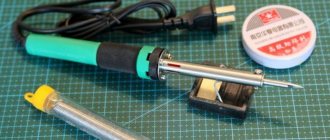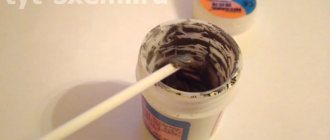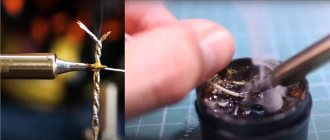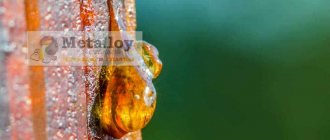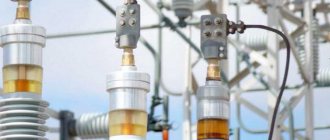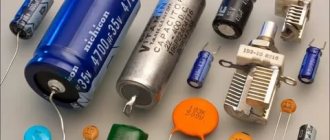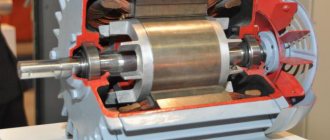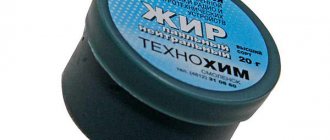Lead-tin solders are widely used in radio electronics for soldering various microcircuits. Achieving high-quality results with their use becomes possible only when the master is well versed in the soldering process and understands the basic rules of operation and selection of solders.
Beginning radio amateurs often ask themselves: which solder is best to choose in this particular case, and what properties they have. This article will help you solve the problem.
Lead-tin solders
Lead-tin solders are divided into soft and hard. The former are fusible and are widely used in working with radio equipment. Their melting point is in the range of 300–450 degrees.
Compositions of lead-tin solders.
This type of alloy is characterized by lower hardness compared to refractory options, however, they are the ones most often used in the installation of microcircuits.
The composition of soft options is a combination of two elements: lead and tin. Alloying elements can also be added. The content of such impurities is insignificant. They are introduced to give the compound certain properties, such as ductility, strength, and so on.
Why are they made from tin? The fact is that stanum is the best material for soldering. It has a number of advantages. These include high conductivity and excellent wetting. However, there are also disadvantages, for example, it is susceptible to the phenomenon of tin plague, the formation of intermetallic surfaces, etc.
You can avoid such problems by adding plumbum, copper, silver, and gold. If the first element is absent in the composition, then the alloy is called lead-free. It is safer for the master. In practice, solders containing lead and designated by the letters “POS” are most often used.
With a melting point less than 200 degrees
There are also solders with very low melting points. This is, for example, POSK-50-18. From the marking it follows that this solder contains 50% tin, 18% cadmium, and 32% lead.
This solder melts at a temperature of 142 – 145 ℃. It is very plastic, but due to its cadmium content, it is toxic.
Another example of such low-melting solders is POSV-50 (it has the name Rose). Here the number 50 indicates a bismuth content of 50%, and tin and lead are present in the composition in equal proportions - 25% each.
Solder melting temperature is 90 – 94 ℃. These two soldering products most often come in tablet-like shape and size. Wood's third alloy contains 10% tin, 40% lead, 40% bismuth, 10% cadmium.
Its melting point does not exceed 72°C. Due to the presence of cadmium in its composition, it is toxic. Rose and Wood alloys are quite expensive.
Indium solders are often used for soldering semiconductors, since their melting point is about 117 ℃. In this alloy, indium replaces tin, and lead is also added to soften it and make it more fluid.
Some indium solders can be used to solder glass. In this case, the edges of the latter are simply rubbed with paste before soldering.
Compound
As noted above, lead solder usually contains Sn and Pb. The percentage amount of the first element is indicated by the numbers behind the letters. For example, POS-40 contains forty percent of stanum, and POS-60 contains sixty. It is worth noting that POS-60 and 61 have the same composition, but are labeled differently.
Many people often do not pay due attention to the composition of the alloy when soldering. Nevertheless, this point is very important, because it determines the installation characteristics and the quality of the work performed.
Pastes for microcircuits
Solder is also available in the form of solder paste. It is a plastic mass consisting of flux and a binder, which contains many tiny balls of tin-lead solder with flux.
Such pastes are used for stencil soldering, that is, when the use of conventional soldering methods is impossible due to the small size of the components.
These can be microcircuits or components in BGA packages. The pastes are applied to the terminals with a spatula and melted with a hairdryer or infrared soldering iron.
Due to the fact that solder pastes dry out quickly, they should be stored in special, hermetically sealed tubes.
To restore BGA packages, that is, to update the solder balls on their terminals, also called reballing, solder balls are produced. It can be either tin-lead or lead-free.
This is a high quality pure product with a very precise chemical composition.
The balls are stored in tightly closed jars at a temperature of 20 - 30 ℃ and a humidity of no more than 60-70%. The shelf life of such solder is usually no more than 12 months. Used for soldering critical components.
Purpose
Depending on the content of a particular material, alloys have different areas of application.
Table of types of solders.
POS-90 is used in the repair of food utensils and medical supplies. It contains a small amount of plumbum, a material toxic to humans.
POS-40 is most often used when working with electrical devices and parts made of galvanized iron. Also serves as a basis for repairing brass and copper pipelines. This connection can replace POS 18 solder, used for the same purposes.
Alloys with 30% stanum content are excellent for the cable industry, tinning and zinc soldering.
Soldering of radio equipment boards is most often carried out using POS-61. It is this option that serves as the main one in the installation of radio electronics parts. You can solder microcircuits with this alloy using a simple soldering iron.
Refractory and low-melting
Solders for soldering are divided into refractory and low-melting.
They are also called hard and soft. All types of solders are widely used in mechanical engineering, electrical engineering, and electronics. Hard solders are used when it is necessary to achieve high joint strength. Probably, such connections could be called constructive. Their melting point reaches 500 ℃ and above.
This temperature is dangerous for most components of electronic circuits, especially for semiconductor devices and limits their use, so other alloys are used for soldering - low-melting alloys.
They are obtained by adding more lead to tin. All low-melting solders have a melting point of about 200 - 240 ℃.
Properties
As noted earlier, there is a division of solders into two categories depending on the melting point. Soft or fusible are alloys that melt at less than 450 °C. It is worth noting that they are not necessarily made of tin. Gallium, bismuth, cadmium, and indium can be used here.
However, often not one, but a mixture of several elements is used. This is necessary to give the alloy the necessary characteristics and parameters. The most common are POS.
It is important to know: it is possible to distinguish one brand of alloy from another without knowing its exact composition, due to the fact that the color of the wire, shine, ductility, hardness, etc. can change depending on the content of certain elements.
Solder chart for aluminum soldering.
Thus, by picking up a wire, trying to bend it and estimating its weight, you can determine with certain accuracy the content of stanum or plumbum in it.
Depending on the concentration of tin, several dozen alloys are distinguished, produced in accordance with the state standard - GOST.
When it comes to properties, they are mainly determined by the tin content. It has two polymorphic modifications. White – with a tetragonal crystal lattice, gray – with a cubic lattice. The transition from one modification to another is accompanied by the release of heat, that is, the reaction is exothermic.
This transformation also leads to an increase in volume, accompanied by destruction with the formation of gray powder. This process is called “tin plague”.
The speed of transformation of the white modification into gray is low. This process limits the use of pure stanum in soldering. In this regard, various chemical elements are added to prevent this transition.
It is also known that such characteristics of tin as strength and hardness are increased by adding nickel, copper, magnesium, and zinc. But the presence of bismuth and zinc will increase wettability and lower the melting point.
POSs cannot be strengthened by cold hardening. Unlike pure stanum, alloys with lead after deformation have less hardness and strength than cast ones.
As a result, by combining different impurity concentration options, it is possible to achieve the desired alloy parameters that are best suited for each specific task.
Named alloys
There are solders designed specifically for soldering parts that are highly sensitive to overheating. The most “high-temperature” among low-temperature ones is POSK-50−18 with a melting point of 142−145 °C. POSK-50−18 contains 8% cadmium, 50% tin and 32% lead. Cadmium enhances corrosion resistance, but at the same time imparts toxicity.
In descending order of temperature comes ROSE (Sn 25%, Pb 25%, Bi 50%), marked POSV-50. T pl. - 90−94 °C. Designed for soldering brass and copper. This alloy contains 25% tin, 25% lead, and 50% bismuth. The ratio of metals in percentage may vary slightly, and their quantity is usually indicated on the package in the “Composition” column.
Used in protective fuses in radio equipment.
An even lower temperature WOOD alloy (Sn 10%, Cd 10%, Pb 40%, Bi 40%). Melting point - 65−72 °C. Since the alloy contains 10% cadmium, it is toxic, unlike ROSE.
Both ROSE and WOOD are quite expensive solders.
Chemical composition of different types of solders.
Low-temperature alloys are used for soldering radio components that are sensitive to high temperatures. These include: POS 40 solder and POS 30 solder. They are widely used in industry, but they are also taken for private use.
POS 30 is excellent for soldering copper and non-copper based alloys. It is used both as a filler material and for tinning parts. A special feature of this brand is the absence of antimony in its composition.
POS 30 makes it possible to obtain reliable sealed connections, which has led to the active use of the material for pipeline systems. In addition, it is characterized by good conductivity and low resistance, which allows it to be used for making small contacts.
The low melting point allows you to avoid overheating of radio components during soldering. At the same time, after hardening, it reliably fixes parts of the product.
From a technical point of view, soldering with this alloy is quite easy. However, it should be borne in mind that if it is used, the parts should not operate at high temperatures.
POS 30 is produced in the form of wire of various diameters from 0.5 to 8 mm. The thickness is chosen based on the problems that need to be solved. To connect small wires and parts, the smallest option is perfect. But repairing cases and soldering large products is easier to do with 8 mm wire.
They differ from each other, of course, in composition. This is evidenced by the numbers at the end of their markings.
Types of lead-free solders.
POS 40 allows you to obtain high-quality and reliable connections. When working with it, no cracks appear, and there are no unsoldered areas or other defects. Low resistance and good conductivity make it possible to use PIC for soldering electronics.
As noted above, this solder has a low melting point. This also imposes restrictions on the use of products soldered using it.
The most common form of alloy production is wire. Its diameter varies from 0.5 to 7 mm. However, it also exists in the form of rods, foil strips, and small tubes.
Another low-temperature solder is POS 61. However, it contains antimony. The alloy has fairly good ductility. Most widely used for soldering semiconductor equipment. The resistivity of POS 61 solder is 0.139 Ohm*mm2/m.
It is produced in the form of metal ingots weighing about 25 kg, rods with a cross-section from 8 to 15 mm, and wire with a diameter from 0.5 to 6 mm. There are also form factors such as tapes, anodes and tubes.
When antimony is added to metal compositions in small quantities, the strength of seam joints significantly increases.
The material is marked “POSSU” and has a melting point from 189 ℃ (for a composition with a trace antimony content) to 270 ℃ (for a solder with an antimony content reaching 4%, in some even 6%).
Materials of the first subgroup with an additive concentration measured in hundredths of a percent are low-antimony grades.
Such solders are used in the aircraft and automotive industries, in the production of refrigeration equipment, and food utensils that are subject to subsequent tinning.
| Brand | Content, % | Application area | ||
| Sn | Sb | Pb | ||
| POSSu 61-0.5 | 59-61 | 0,05-0,5 | Rest | Soldering parts sensitive to overheating |
| POSSu 50-0.5 | 49-51 | 0,05-0,5 | Rest | Aviation radiators |
| POSSu 40-0.5 | 39-41 | 0,05-0,5 | Rest | Galvanized parts of refrigerators, radiator tubes, windings of electrical machines |
| POSSu 35-0.5 | 34-36 | 0,05-0,5 | Rest | Cable sheaths for electrical products, thin-sheet packaging |
| POSSU 30-0.5 | 29-31 | 0,05-0,5 | Rest | Radiators |
| POSSu 25-0.5 | 24-26 | 0,05-0,5 | Rest | Radiators |
| POSSu 18-0.5 | 17-18 | 0,05-0,5 | Rest | Heat exchanger tubes, electric lamps |
Metal tin-lead compositions with an antimony concentration from 1.5% to 6% are called antimony. They are recommended for use in electric lamps, tubular radiators, and tinplate.
The addition of antimony makes the tin-lead material cheaper, but soldering is more difficult. A slight change in the tin-lead composite significantly reduces the wetting properties of the melt. Only professionals can work with this consumable.
Technical characteristics of POS-10 solder
POS 10 solder has a distinctive chemical composition. It contains 9-10% tin, about 89% lead, 0.2% bismuth, 0.1% antimony and other impurities in small quantities. POS-10 solder is used for soldering and tinning contact surfaces of electronics. For example, they solder relays and fill control plugs in radio electronics housings.
The POS-10 soldering temperature is 299 degrees Celsius. The solidus point is 268 degrees.
Advantages of POS-10 solder:
- high melting point is useful when soldering equipment cases.
Disadvantages of POS-10 solder:
- low strength and tensile strength of about 3.2 kgf/sq.mm.;
- high resistivity - 0.2 Ohm x sq.mm./m;
- high content of lead, which is hazardous to health.
Soldering process
Combining 2 or more parts using soldering is carried out for:
— obtaining electrical contact with low resistance;
- obtaining a strong seam (sometimes thermal, absolutely sealed).
The soldering process is based on the difference in melting temperatures between the solder and the metals being joined. While the soft alloy melts and becomes liquid and fluid, the metals being joined remain solid. Molten metal flows over the parts being joined, filling the voids between them. During the soldering process, an intermediate layer is formed, which includes the combined parts of the solder and the material of the elements being combined. With its help, a single structure is formed from two or more parts. Rosin or an alcohol solution of rosin act as a flux when soldering PICs.
Before starting work, you need to choose the right solder based on:
— properties of the materials being combined;
— requirements for connection strength;
— corrosion resistance of the junction;
- its cost.
And when soldering parts that conduct current, the conductivity coefficient is also taken into account.
For soldering copper wires, use POS-40 based on rosin. Stainless steel can be joined with conventional POS, but for flux they use a special material that is more active than rosin.
Technical characteristics of POS-30 solder
Solder for soldering of the POS 30 brand is an intermediate link between POS 10 and POS 40. The composition of POS 30 solder is as follows: 30% tin and 69.5% lead. The rest is impurities and doping. Solder POS 30 can be easily replaced with POS 40, which is described below. The melting point (liquidus) is 238 degrees, and the plasticity temperature (solidus) is 183 degrees Celsius. According to the technical characteristics, POS 30 solder is most often used for soldering and tinning of zinc sheets and radiators.
Advantages of POS-30 solder:
- good adhesion;
- high strength.
Disadvantages of POS 30 brand solder:
- high lead content;
- often produced in rods.
Solders and methods of soldering materials.
Lead-tin solders (POS.)The use of lead-tin solders can only give good results when the worker correctly understands the soldering process and knows the basic rules of work. Depending on the purpose of the parts or products being soldered, soldering seams are divided into: strong seams
(must withstand mechanical loads);
tight seams
(should not allow liquids or gases under low pressure to pass through);
durable and tight seams
(must withstand the pressure of liquids and gases under high pressure).
During the soldering process, as a result of wetting, solder forms an intermediate alloy zone with the surface of the part being soldered, and the quality of soldering in this case, in the presence of clean metal surfaces, will depend on the rate of dissolution of a given metal in the solder: the higher the dissolution rate, the better the quality of soldering. In other words, the quality of soldering depends on the diffusion rate. The increase in the degree of diffusion is facilitated by: the presence of clean metal surfaces of the parts being soldered. With an oxidized surface, the degree of solder diffusion is significantly reduced or completely absent; preventing oxidation of the molten solder during the soldering process, for which appropriate soldering fluxes are used; soldering at a temperature close to the melting point of the part being soldered; slow cooling after soldering (in hot sand, hot coals). It has been noticed that when soldering parts galvanically coated with other metals, the seam is not as strong as when soldering pure metals or alloys. This is observed with all galvanic coatings (nickel, chromium, tin, cadmium). On the contrary, soldering over hot tinning with tin or tin-lead alloys always gives a stronger connection than over pure metal. This example confirms the influence of the degree of diffusion on the strength of the weld during soldering.
Tinning
- the process of coating metal surfaces with tin or a special tin-based alloy (semi-doy).
Solder
- a metal or alloy that serves to join in a molten state, in the gap (seam) between parts, therefore the solder must have a lower melting point than the metals being joined.
Based on their composition, solders are divided into several groups, the most important of which are tin-lead solders.
Solder compositions.
Often, due to the lack of information about solders, the worker always has a tendency to use solders with a high tin content, although this is not always necessary. The correct choice of solder can only be guaranteed when its properties are known.
In table Table 1 shows the compositions of the most well-known tin-lead solders.
Purpose of solders.
POS 90
— for soldering internal seams of food utensils (pans, etc.).
POS 40
— soldering of brass, iron and copper wires.
POS 30
— soldering of brass, copper, iron, zinc and galvanized sheets, tinplate, instruments, radio equipment, flexible hoses and banding wire for electric motors.
POS 18
— soldering of lead, iron, brass, copper, galvanized iron, tinning of wood before soldering, solder substitute POS 40.
POSS 4-6
- soldering of tinplate, iron, copper, lead in the presence of riveted key seams, solder substitute POS 30.
Table 1
Compositions of tin-lead solders:
Brand
| Compound % | Impurities % | |||||
| Tin | Lead | Antimony | Copper | Bismuth | Arsenic | |
| POS 90 | 80 — 90 | rest | 0,1 –0,15 | 0,08 | 0,1 | 0,05 |
| POS 39-40 | 39-40 | ———- | 1,5-2,0 | 0,1 | 0,1 | 0,05 |
| POS 30 | 29-30 | ———- | 1,5-1,5 | 0,15 | 0,1 | 0,05 |
| POS 18 | 17-18 | ———- | 2,0-2,5 | 0,15 | 0,1 | 0,05 |
| POSS 4-6 | ———- | 5-6 | 0,15 | 0,1 | 0,05 | |
Properties of tin-lead solders.
In table Table 2 shows the properties of tin-lead solders in comparison with pure metals - lead and tin. The most important property of solders is shear resistance, since most solder joints are shear-resistant.
Tin-lead solders of the POS 18, POS 30, POS 40 brands have higher shear resistance than pure tin and lead, and therefore their use to obtain a strong seam gives better results.
Solders must have both high tensile strength and maximum toughness. According to the table, it is possible to establish the interchangeability of high-tin and low-tin solders. For example, POS 18 solder in terms of viscosity is slightly better than POS 40 solder, and differs slightly from the latter in strength. POS 50 solder can easily be replaced by POS 40 and POS 30 solder. Knowledge of hardness is important in the sense that harder solders resist abrasion better than soft ones.
Therefore, all the advantages in this regard will be for POSS 4 - 6 solder. The remaining solders (POS 18, POS 30 and POS 40) have a slightly lower hardness. Impact strength (impact resistance) is of greatest importance for pure tin, but POS 40 and POS 30 solder differs little from tin in this regard. Therefore, POS 40 solder can be used in special cases where soldering points are subject to strong vibration. For normal operating conditions, with minor vibrations, POS 18 solder is used.
The melting temperature of the solder is also of great importance: the choice of soldering method depends on it. POS 62 solder, containing 62% tin, has the lowest melting point. This solder is used in cases where parts cannot be overheated during soldering, for example, when connecting very thin wires. The possibility of using ternary low-melting alloys in such cases, in which
Table 1 Properties of tin-lead solders
| Solder grade | Melting temperature | Melting start temperature | Curing interval | Tensile strength Kgs\mm2 | Relative extension |
| 0,1 | 232 | 232 | 0 | 1,9 | 43 |
| POS 90 | 222 | 183 | 39 | 4,3 | 25 |
| POS 50 | 209 | 183 | 26 | 3,6 | 32 |
| POS 40 | 235 | 183 | 52 | 3,2 | 63 |
| POS-30 | 256 | 183 | 73 | 3,3 | 58 |
| POS 25 | 265 | 183 | 82 | 2,8 | 52,1 |
| POS 18 | 277 | 183 | 94 | 2,8 | 67 |
| POSS 4-6 | 265 | 245 | 20 | 5,9 | 23,7 |
| C1 | 327 | 327 | 0 | 1,1 | 45 |
the low melting point achieved by adding a third component (for example, bismuth) is excluded due to the fact that ternary alloys do not have such high viscosity as binary alloys. NOS 62 solder is now rarely used, since overheating during soldering can be easily avoided by using POS 40 solder of a very thin section, for example in the form of wire with a diameter of 1-2 mm. Under the action of a soldering iron, thin wire melts quickly, as a result of which the time of exposure to high temperature is reduced to a minimum.
Practice has shown that POSS 4-6 grade solder in terms of solder strength is equivalent to POS 30 grade solder for all materials except galvanized iron and copper. At the same time, solder of the POS 40 brand in most cases has the greatest strength and in this respect is superior to high-tin solder of the POS 62 brand and pure tin. Therefore, to obtain the greatest strength of the weld, pure tin should never be used.
POS 18 brand solder, when butt soldering, gives higher adhesion strength than POS 40 brand solder. Therefore, POS 18 solder is used when the melting temperature of the solder is not critical.
Soldering technological process.
To obtain the best results, the soldering process should consist of the following operations:
mechanical (scraper, file, sandpaper) or chemical cleaning; flux coatings; heating (soldering iron, blowtorch, forge); pre-tinning with solder (with a soldering iron, or rubbing, or immersion in solder); fastening places for soldering, coating them with flux and heating; introducing solder, melting it and removing excess solder, as well as flux residues.
Cleaning
oxides are removed from soldered surfaces with a file or scraper so that the gap between the two surfaces is the same everywhere and does not exceed 0.1-0.3 mm. Such a small gap is necessary for the formation of capillary forces, which contribute to the suction of solder to a significant depth from the edge. If the surfaces to be soldered have traces of fat or oil, then they are treated with a hot alkali solution. Usually they take a 10% soda solution. If it is impossible to mechanically clean the parts for any reason, then etching of the parts in acids is used. Typically, a 10% solution of sulfuric acid is used for copper and its alloys, and for parts made of ferrous metals, a 10% solution of hydrochloric acid is used, and the solution must be heated to 50-70 °C. After cleaning and preparing the parts, the soldering points should be tinned. Pre-tinning is very important, since in this case increased strength and density of the joint are achieved. If pre-tinning is not possible, soldering can also be done on a clean surface, but the results, of course, will be lower. For preliminary tinning, the same solder is used as for subsequent soldering. If, for example, soldering is performed with POS 30 grade solder, then preliminary tinning should be carried out with the same solder.
Before soldering
the parts are fastened so that the joints do not diverge under minor mechanical influences, for example when applying a soldering iron. The simplest way of fastening is tying with soft wire, preferably iron, but, of course, other methods are not excluded, for example, compression with clamps, bending the seam to form a “lock”.
The soldering method depends greatly on the type of solder used. The most typical cases of soldering:
soldering iron
using soft solders;
hand blowtorch
usually using hard solders;
electrical soldering
(the junction serves as a resistance; a low voltage current is passed through the resistance).
When soldering with a soldering iron, solders are usually used whose melting point is not higher than the melting point of lead (327°C). Such soldering is performed when the parts are not subjected to heavy loads or require further soldering. If parts are heated to high temperatures during operation, soldering with a soldering iron using soft solders is excluded.
Preparing the soldering iron
for work are carried out simultaneously with the preparation of parts. The soldering iron is lightly forged (partially to remove carbon deposits and oxides), clamped in a vice and filed so that its working part is semicircular. If you file a soldering iron without first forging it, it will soon wear out. The end of the soldering iron is made semicircular because in this case it does not cool as quickly as a sharp one, it warms up the soldering areas better and is corroded more evenly by liquid solder.
After mechanical preparation, the soldering iron is tinned, for which it is heated no higher than 400 ° C, the end of the soldering iron is dipped into an aqueous solution of zinc chloride, after which the hot soldering iron is rubbed against a piece of solder until the entire working part is covered with a layer of poluda.
During operation, the soldering iron must have a temperature that satisfies the following requirement: if the soldering iron is applied with a working place to a solder bar, the part of the solder adjacent to the soldering iron should melt in 0.5-1 s. During operation, the temperature of the soldering iron should be such that the solder flakes or drops of solder adhering to the soldering iron are in a liquid state.
A more convenient way to service a soldering iron is as follows: make small indentations in a piece of ammonia (ammonium chloride) and place pieces of solder there. As you move the hot soldering iron back and forth across the solid ammonia, you simultaneously touch the solder. This way the soldering iron is tinned faster.
If you touch the seam with a heated soldering iron and at the same time place a piece of solder in the form of a rod, tape or wire on the seam, the solder will melt and penetrate into the seam. Excess solder is smoothed along the seam with a soldering iron. Solder is also applied to the seam with a soldering iron, since drops of solder always stick to the soldering iron, and if the tip of the soldering iron is passed along the seam, liquid solder is sucked into the seam. In order for new drops of solder to transfer to the soldering iron, it is again taken away from the seam and applied to a piece of solder.
Tinning.
The technological process of tinning consists of the following operations:
cleaning the surface from foreign substances with a wire brush, sand, lime or sandpaper; degreasing with gasoline or a hot aqueous solution of soda or caustic soda; washing in water; chemical cleaning from etching oxides in acids; coating with fluxes (zinc chloride) by brush or immersion in an aqueous solution of flux; heating to the melting temperature of semi-solid and tinning. They tin small objects with a soldering iron; if necessary, the working part of the soldering iron is tinned into the shape of the object being tinned (for example, a semicircle when tinning tubes and wire).
Tinning of large objects - tanks and other containers - is done by rubbing. To do this, the product is moistened with a solution of zinc chloride and heated (on a forge, coals, etc.) to the melting point of tin, after which it is sprinkled with a powdered mixture of tin and ammonium chloride (ammonia). At the same time, the tin melts and, ground with tow, forms an even layer of poluda on the surface. After tinning, flux residues are washed off with hot water.
When tinning food utensils, the old half is checked for lead content, for which part of the tinned surface is moistened with a 10-15% solution of acetic acid. After 2-3 minutes, apply 5-6 drops of an 8-10% solution of potassium iodide to the same place, add water and rub both solutions over the surface. If there is lead in the solution, a characteristic yellow color of the solution appears on the wetted surface. If lead is detected, the surface of the product is etched with a mixture of nitric and hydrochloric acids or cleaned with a sandblaster until the half-lead is completely removed.
Soldering methods.
Some metals or alloys require special soldering techniques.
Lead.
When heated, lead oxidizes so quickly that soldering must be carried out in a reducing atmosphere, which protects the soldered areas from oxidation and allows the solder to easily connect to the base metal.
A reducing atmosphere is formed as a result of the use of a burner for heating, into which hydrogen and air oxygen are supplied, and hydrogen should always be in excess. Lead is used as solder. The use of lead-tin solders is undesirable, since the seam then begins to corrode in acids.
Zinc
. For soldering zinc, conventional lead-tin solders are used. We recommend using POS 30 solder mixed with chloride flux.
If the zinc is pure, then when soldering it, a saturated solution of zinc chloride or dilute hydrochloric acid is usually used. If contaminated zinc or a zinc alloy is soldered, then when hydrochloric acid is used as a flux, a black deposit forms at the etching site (therefore, it is recommended to use hydrochloric acid with ammonium chloride).
Note that double fluxes protect metal from corrosion to a greater extent than ordinary flux. When soldering with lead-tin solders, it is better to use a flux containing ammonium chloride and a saturated solution of zinc chloride, taken in a ratio of 1:5 (by weight). For tin-cadmium solders, it is recommended to use caustic soda as a flux. When soldering zinc alloys containing more than 2% aluminum (parts made by injection molding), the same methods are used as when soldering aluminum or alloys. In this case, tin-zinc solders are used, and hydrochloric acid, petroleum jelly or stearin are used as fluxes. Sometimes a flux consisting of 85% stearic acid and 15% sodium chloride is used.
Cast iron.
To solder a crack or other defect in a cast iron part with soft solder, thoroughly mechanically clean the soldering area and moisten it well with hydrochloric acid. Then this place is treated with an aqueous solution of zinc chloride, sprinkled with ammonia (ammonium chloride) powder and heated with a soldering iron or blowtorch. It is necessary to heat the soldering area until the solder brought to it begins to melt. Then rub the solder area with solder and immediately wipe it with ammonia powder applied to a thick metal brush or tow. This operation is preliminary tinning before soldering. While the part is still hot, solder cracks or other defects with a soldering iron, moving it from one end of the crack to the other. If the solder does not penetrate into the crack, you need to remove a small chamfer from both edges with a sharp chisel, tin this place and perform soldering again. Excess solder is removed with a scraper or file.
Soldering metals to glass, quartz, porcelain. When soldering metal to glass and other similar materials, it is necessary to galvanically deposit a layer of metal at the soldering site and then perform soldering in the usual way.
Soldering glass products to metal (for example, when connecting glass tubes with metal flanges, etc.) is done as follows: first, the surface of the glass is ground with sandpaper, then graphite is rubbed into the rough surface with a rag, and copper is deposited in this place in an electroplating bath. Next is soldering and secondary deposition of copper (or nickel).
Quartz
. The quartz part is thoroughly cleaned and degreased by successive washing in nitric acid, alkali and water. A layer of silver is applied to the cleaned part using two solutions (the content of components is given in grams).
Solution
(silver) Water 200 Silver nitrate 2 Ammonia until the precipitate dissolves
Solution 2
(reducing) Water 1000 Silver nitrate 10 Rochette salt 3.3 Refined sugar 3.3
Solutions 1 and 2 are poured together and applied to the surface of the part in such a way that the entire area to be silvered is covered with the solution. Immediately before silvering, the part should be processed for 1-2 minutes. 1% solution of stannous chloride and rinse with distilled water. The silvering process lasts 20-30 minutes until a golden-colored sediment is obtained. The silver-plated part is rinsed and dried at 50-70 °C. After drying, a copper layer of the required thickness is electrolytically grown onto the resulting silver layer from an acidic copper bath. Silver plating and copper plating are done on porcelain in the same way.
Aluminum.
To solder aluminum, put a corrugated tip on the soldering iron (its working part is cut with a triangular file). The nozzle is made of U-7 steel and hardened so that the teeth do not work together. The nozzle is turned on a lathe and its end is sawed off. The nozzle tube is sawed into four parts with a hacksaw, this creates springiness of the nozzle, and it is tightly inserted into the working part of a regular soldering iron. The diameter of the hole in the nozzle is drilled in accordance with the diameter of the working end of the soldering iron.
The welding areas are thoroughly cleaned until shiny, melted rosin is taken onto the teeth of the nozzle and applied to the soldered area. When the rosin begins to cover the aluminum during the tinning process, the soldering iron is moved back and forth in short movements, and the teeth will scrape the metal. Using this method, the entire surface of the joint is cleaned, after which the cleaned areas are tinned. Then they start soldering. To do this, take a drop of tin, previously sprinkled with rosin, on a soldering iron and bring it to the tinned area. If the tinned area is rough, then use a soldering iron to remove this roughness, which is porous tin mixed with particles of aluminum oxide formed due to a lack of flux. First, pour rosin onto the soldered joint, take a drop of tin on the soldering iron and apply it to the seam to be soldered. As soon as the tin wets the joint, the soldering iron is removed from the metal. Then soldering is performed a second time; for this, the soldering area is again sprinkled with rosin.
When soldering aluminum, especially during the tinning process, the soldering iron should be warmed up well and kept in one place for a long time and, after heating the metal, slowly move along the seam being soldered.
For soldering aluminum alloys, POS 50 and POS 90 solders are recommended. The flux is mineral oil (weapons oil is especially recommended). First, flux is applied to the seams to be soldered and then the soldering areas are cleaned. Soldering is carried out with a powerful, well-heated soldering iron. Before starting soldering, the metal should be warmed up well. For soldering aluminum alloys, a special P250A solder is also produced; it consists of 80% tin and 20% zinc. The flux is a mixture of lithium iodide (2.-3g) and oleic acid (20 g). Before use, the soldering iron must be tinned with the specified solder using rosin. The surfaces to be soldered are cleaned of flux residues with a gauze swab soaked in acetone.
Soldering products with thin seams.
To solder such products (for example, chains, rings or other jewelry), a special solder is used, consisting of a mixture of equal parts - boric acid, zinc (fine zinc), copper, phosphorus, which is mixed with castor oil. The products are dipped into this solder and the solder penetrates into the joint of the product. Then the products are sprinkled with talc to remove excess solder remaining on the surface of the product, after which the product is intensively heated on a gas burner at a temperature of 1000°C. When heated quickly, the solder produces a microflash, and the temperature rises to 1200 °C.
Hard soldering.
For soldering products made of copper and brass, when soldering the most critical seams, hard solders consisting of an alloy of copper and zinc are used. Such solders include brass grade L-63, which contains copper from 62 to 65%, the rest zinc, as well as solders containing copper - 51%, zinc - 44 and tin - 5%. The addition of tin gives the solder plasticity and improves spreadability over the metal. The melting point of solder L-63 is 950 °C, solder with tin is 860 °C. For soldering thin products, solders in the form of sawdust are used; for one part of the solder, one part of the flux is taken - calcined borax. Soldering is carried out in a stream of flame from a blowtorch,
Fluxes.
When soldering, fluxes play the role of chemical solvents and oxide absorbers. During the soldering process, they protect the metal from oxidation and create conditions for wetting the metal with solder. When working with lead-tin solders, hydrochloric acid, zinc chloride, boric acid, borax, ammonium chloride, etc. are used as fluxes. Fluxes that do not produce a chemical effect include: rosin, wax, petroleum jelly, olive oil, etc. These fluxes form a coating on the surface of the metal that protects it from oxidation.
A solution of hydrochloric acid is used when soldering with lead-tin and other soft solders.
Zinc chloride is a good fluxing agent for soldering brass, copper, iron and other metals and alloys. To prepare zinc chloride, cut the zinc into small pieces, “dissolve” it in hydrochloric acid, and then the prepared zinc chloride is diluted with an equal volume of water.
Ammonia (ammonium chloride) dissolves fatty substances well.
Borax is used both in dissolved and solid form. Instead of borax, you can also use glass powder. Liquid glass is also used as a flux.
Flux for soldering aluminum consists of tung oil, rosin and calcined zinc chloride, taken in a ratio of 3:2:1 (by weight).
To remove oxides on aluminum during soldering, fine steel filings are used, which remove the resulting oxide during the soldering process.
